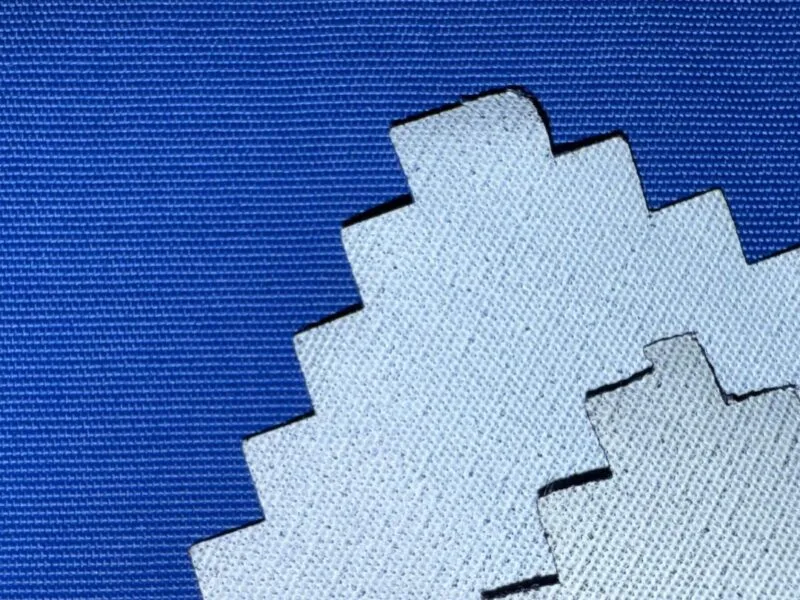
Polyurethane (PU) coating are widely used in the textile industry to enhance the performance of fabrics. Among the various types of PU coatings, milky PU coating stands out for its distinct properties and versatile applications. This article explores the advantages and features of PU milky coated fabrics, highlighting why they are a popular choice across various industries.
1. What is PU Milky Coating?
PU milky coating refers to a polyurethane application that creates a milky, opaque finish on fabric surfaces. The coating is typically applied through a lamination or coating process that bonds the PU layer to the fabric base. This finish not only improves the visual appeal but also enhances the fabric’s functional properties.
2. Key Features of PU Milky Coated Fabrics
2.1 Waterproof Properties
PU milky coated fabrics are highly effective in providing water resistance. The PU layer creates a barrier that prevents water penetration, making these fabrics ideal for outdoor and wet-weather applications.
- Hydrophobic Surface: The milky coating repels water, ensuring dryness in rainy or humid conditions.
- Durability Against Water Pressure: These fabrics can withstand significant water pressure without compromising their integrity.
2.2 Breathability
Despite their waterproof nature, PU milky coated fabrics maintain a degree of breathability. This ensures comfort for users by allowing moisture vapor to escape from the inside, reducing the risk of overheating or discomfort during prolonged use.
2.3 Soft and Smooth Texture
The milky PU finish provides a soft and smooth texture, enhancing the fabric’s aesthetic and tactile appeal. This makes the material suitable for applications where comfort and appearance are critical, such as fashion and upholstery.
2.4 Lightweight
PU milky coated fabrics are known for their lightweight nature. The coating does not add excessive bulk, making them easy to handle and ideal for products where weight is a concern, such as backpacks and tents.
2.5 Eco-Friendly Options
Many manufacturers now offer PU milky coatings made with environmentally friendly formulations. These coatings reduce the use of harmful chemicals, aligning with sustainable production practices.
3. Advantages of PU Milky Coated Fabrics
3.1 Versatility
PU milky coated fabrics are versatile, catering to a wide range of applications. They are used in industries such as fashion, outdoor gear, automotive interiors, and home furnishings.
- Fashion: Jackets, raincoats, and bags.
- Outdoor Gear: Tents, sleeping bags, and waterproof covers.
- Automotive: Seat covers and interior linings.
- Home Furnishings: Upholstery and curtains.
3.2 Enhanced Durability
The PU coating significantly enhances the durability of the base fabric. It provides resistance to wear and tear, prolonging the lifespan of the material even under rigorous conditions.
- Abrasion Resistance: Protects against damage from friction or rough use.
- UV Protection: Some PU coatings offer UV resistance, preventing fabric degradation from prolonged sun exposure.
- Chemical Resistance: The coating resists damage from oils, stains, and chemicals.
3.3 Cost-Effectiveness
PU milky coated fabrics offer a cost-effective solution for achieving high-performance characteristics. Their durability and versatility make them a worthwhile investment for manufacturers and consumers alike.
3.4 Customization
These fabrics can be customized to meet specific requirements, including different colors, patterns, and thicknesses. This flexibility allows manufacturers to create products tailored to unique customer needs.
4. Applications of PU Milky Coated Fabrics
4.1 Outdoor and Sportswear
PU milky coated fabrics are widely used in outdoor and sportswear due to their weather-resistant properties. They keep the wearer dry and comfortable, even in extreme weather conditions.
4.2 Industrial Uses
The durability and chemical resistance of these fabrics make them suitable for industrial applications such as protective gear, tarpaulins, and conveyor belts.
4.3 Home Textiles
In home textiles, PU milky coated fabrics are used for waterproof upholstery, curtains, and mattress protectors. Their aesthetic appeal and functionality make them a preferred choice for modern interiors.
4.4 Automotive Industry
In the automotive sector, PU milky coated fabrics are employed in seat covers, headliners, and door panels. Their durability and ease of maintenance contribute to their widespread use.
5. Maintenance and Care
Proper care is essential to maintain the performance and longevity of PU milky coated fabrics. Here are some tips:
- Cleaning: Use a damp cloth to wipe off dirt and stains. Avoid abrasive cleaners that can damage the coating.
- Storage: Store in a cool, dry place away from direct sunlight to prevent degradation.
- Reapplication: For fabrics with DWR (Durable Water Repellent) finishes, reapply the coating periodically to maintain waterproof properties.
6. Challenges and Considerations
While PU milky coated fabrics offer numerous advantages, there are some considerations to keep in mind:
- Limited Breathability: Although breathable, these fabrics may not be as effective as other high-performance breathable materials.
- Temperature Sensitivity: Extreme temperatures can affect the coating’s performance. Low temperatures may make it stiff, while high temperatures could lead to peeling.
- Environmental Impact: Despite eco-friendly options, traditional PU coatings can have environmental implications if not disposed of responsibly.
7. Conclusion
PU milky coated fabrics represent a perfect blend of functionality, durability, and aesthetics. Their waterproof, breathable, and versatile properties make them a popular choice across various industries, from fashion to automotive. By understanding their features and advantages, manufacturers and consumers can make informed decisions about incorporating these fabrics into their products and designs. As innovation continues, PU milky coated fabrics are likely to evolve, offering even more sustainable and high-performance solutions for modern needs.

